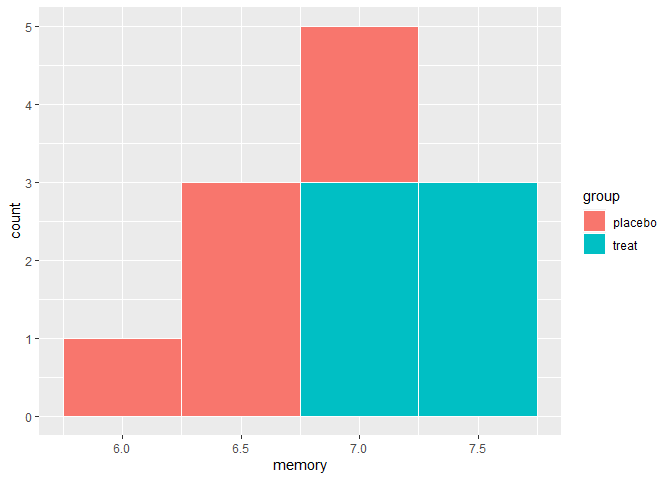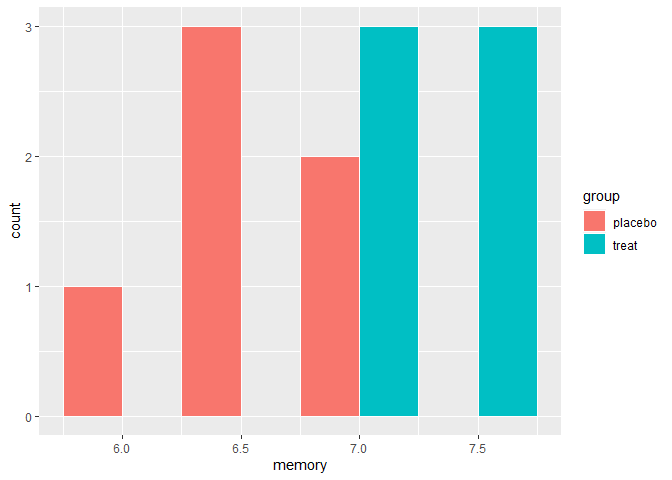Hi, I am very very new to rstudio and struggle with it/the terminology of R immensely so please bare with me when I try to explain what I’m doing and why!
I’m trying to plot a histogram of data representing values for "memory" against values for "time" in a particular group of participants that I have created a subset for. I have been using the below code:
hist <- ggplot(data = dataSubset, aes(x = memory, y = time)) +
geom_histogram(bins = 0.2, fill = 'midnightpurple') +
xlim(5, 9)
theme_classic()
hist
but I am met with "stat_bin() can only have an x or a y aesthetic " every time. I've looked in my books and also on the internet but cant fathom out where I am going wrong. As I said already I am very new to rstudio and very unfamiliar with the package as a whole so I really would appreciate any help I can get.
Thank you

